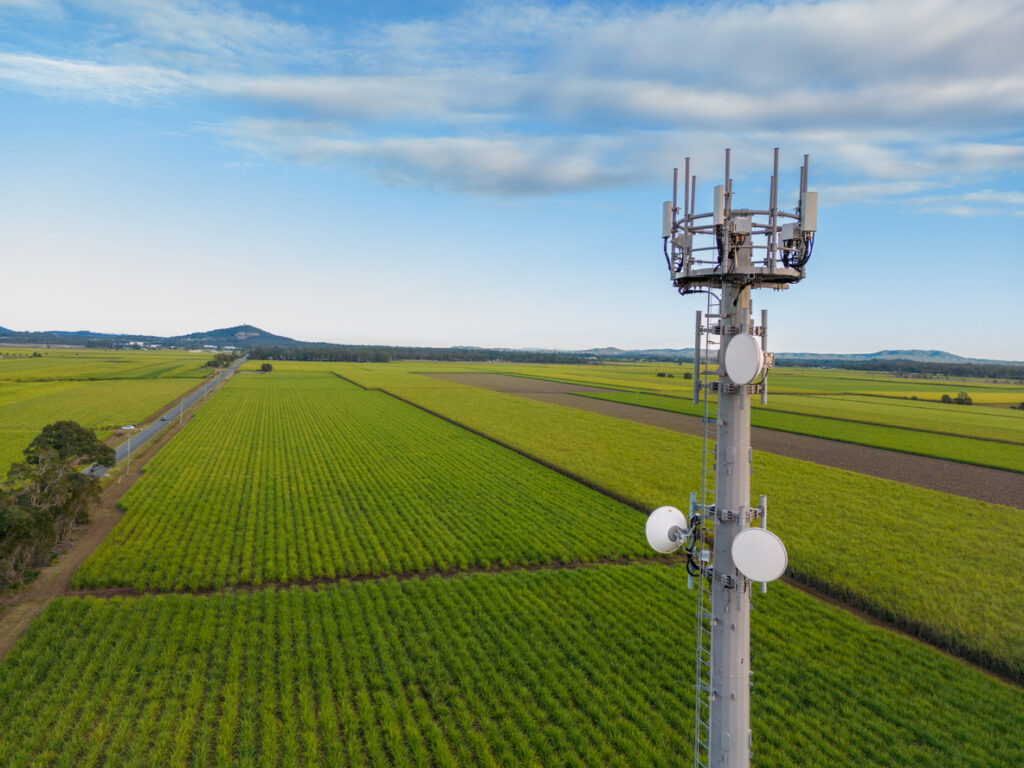For decades, rural and remote sites have been the weak points in enterprise WANs. Fiber rarely reached them. DSL underperformed. Satellite was slow and expensive. IT leaders had two choices: overpay for private lines or accept degraded performance at the edge. Rural 5G is changing that
5G coverage has expanded beyond urban centers into highways, towns, and industrial corridors. Unlimited data plans are no longer consumer gimmicks — they’re viable options for enterprise use. And the performance is real: sub-20ms latency, hundreds of Mbps throughput, and resilience that outstrips DSL.
Rural 5G doesn’t mean every dead zone is covered. But for the first time, enterprises can design WANs that treat remote sites as first-class citizens, not exceptions. This shift forces IT to rethink how connectivity is designed, secured, and managed.
The old rural connectivity problem
The pain of rural connectivity is familiar to anyone who’s managed a WAN across regions.
- DSL and copper lines barely supported basic office applications. Add voice, video, or SaaS, and users drowned in latency.
- Satellite offered coverage but punished with high costs and lag measured in seconds.
- Private circuits could be provisioned — at a price. Enterprises paid tens of thousands for single connections to mines, plants, or warehouses.
The result: WAN refresh projects always stalled at rural sites. Designs looked clean on paper, but every rollout had “problem children” — the sites IT couldn’t connect without compromises. Rural 5G doesn’t erase those challenges entirely, but it fundamentally shifts the economics.
Rural 5G coverage is expanding — and it’s not just urban
Carriers used to focus their 5G builds on city centers and high-density areas. That’s no longer the case. Rural 5G coverage now stretches along major highways, through smaller towns, and into industrial zones that were ignored by fiber builds.
- In the U.S., rural 5G now reaches over 70% of the population.
- In Europe, regulators have tied 5G spectrum licenses to rural coverage obligations, forcing carriers to extend beyond metros.
- In Asia-Pacific, rural 5G rollouts are leapfrogging fiber in regions where fixed infrastructure was never economical.
This expansion matters because it puts enterprise-grade bandwidth within reach of places where MPLS or fiber builds were cost-prohibitive. Combine that with unlimited rural 5G data plans that offer predictable spend, and suddenly IT leaders can think about 5G as primary, not just backup.
What rural 5G makes possible
The leap in coverage isn’t just about filling gaps. Rural 5G changes what enterprises can do at the edge.
- Primary connectivity: For remote depots, retail outlets, or pop-up sites, rural 5G can serve as the main WAN connection — faster and more stable than DSL or satellite.
- Secondary links: Enterprises can add rural 5G to remote sites as affordable redundancy, boosting resilience without the cost of private circuits.
- Mobile edge operations: Construction projects, emergency response units, and field research can run on reliable connectivity without waiting for temporary lines.
- IoT and analytics: In sectors like agriculture, mining, and energy, rural 5G supports real-time data from sensors, drones, and machines spread across wide geographies.
- Disaster recovery: Rural 5G provides a rapid-deploy option when fiber cuts or natural disasters take fixed connectivity offline.
These use cases aren’t theoretical. Enterprises are already rolling out private 5G at farms, ports, and factories, and using rural 5G to extend WAN reach into places that were previously unworkable.
The limits IT needs to know
Rural 5G changes the equation — but it doesn’t eliminate the fine print. Enterprises that rush in without designing for the limits will face surprises.
- Coverage isn’t universal. Rural doesn’t mean everywhere. Dead zones remain.
- Unlimited isn’t truly unlimited. Many “unlimited” rural 5G plans still throttle or deprioritize heavy users during congestion.
- Performance is variable. Distance from towers, terrain, and backhaul quality can cut into speeds.
- Compliance matters. Enterprises using rural 5G for voice and WAN connectivity still need lawful intercept, emergency calling, and retention to meet regulatory standards.
- Security must be layered. Public rural 5G is not inherently secure. It has to be folded into Zero Trust and SASE models to protect enterprise traffic.
The takeaway: rural 5G is powerful, but it isn’t plug-and-play. IT leaders must treat it like any other underlay — design around its realities, not just its promises.
Designing rural 5G into the enterprise WAN
Enterprises that succeed with rural 5G don’t treat it as an afterthought. They design it into the WAN portfolio from the start.
- Hybrid WAN: Blend rural 5G with MPLS, SD-WAN, and broadband to create resilience.
- Use cases: Match rural 5G to scenarios where it offers clear benefits — remote branches, mobile operations, backup links.
- Monitoring: Extend visibility across rural 5G underlays, so performance is measured alongside other transports.
- Managed services: Partner with providers that can deliver SLA alignment, compliance integration, and global coverage.
The most effective refresh strategies see rural 5G not as a replacement for wired WAN, but to fill gaps, accelerate deployments, and extend reach.
The new remote equation
Rural 5G is no longer a promise. It’s live, and enterprises are already using it to bring remote sites into the WAN with performance that rivals wired options.
It won’t replace every circuit, and coverage isn’t flawless. But rural 5G changes the economics of remote operations. Where IT once had to choose between overpaying for private lines or living with degraded service, rural 5G creates a third option: fast, resilient, and flexible connectivity that’s available now.
Enterprises that design rural 5G into their WAN strategies — with compliance, monitoring, and managed connectivity layered in — can treat remote sites as first-class nodes, not exceptions.
👉 If you’re exploring rural 5G for your sites, talk to our team about how to design it into a network that delivers performance everywhere, not just in the city.




